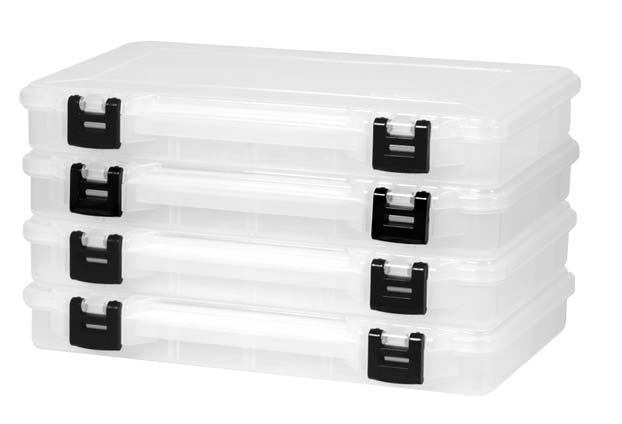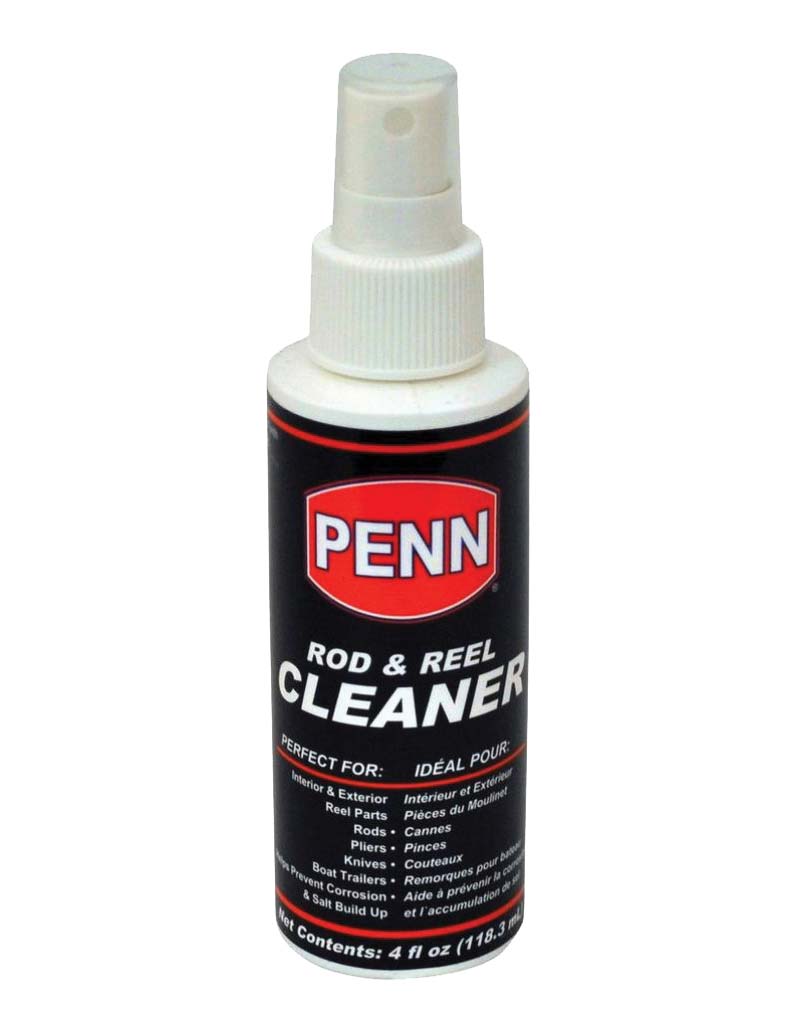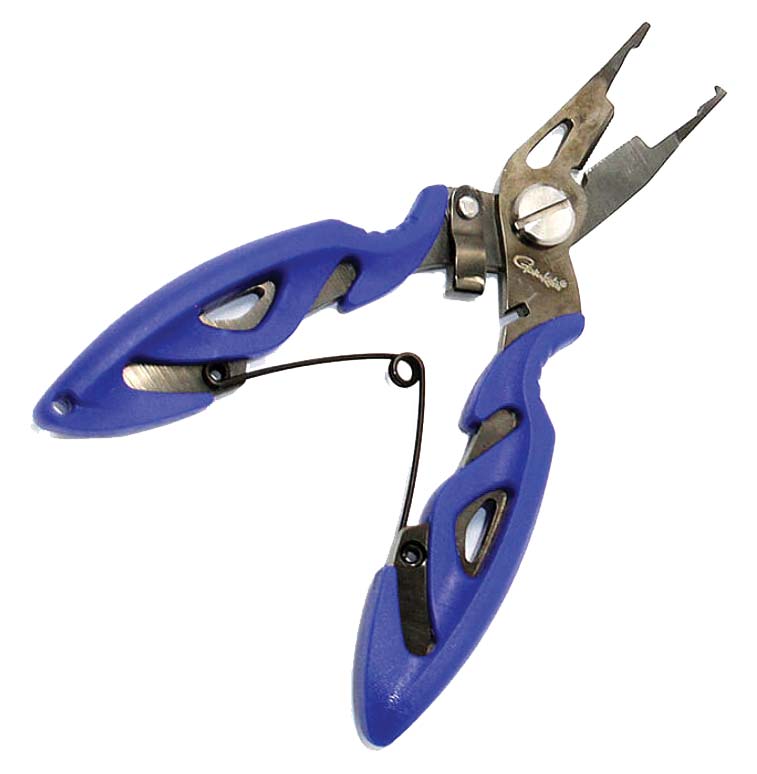
Organizing your tackle will help you save time on the water and be more successful with your fishing endeavors.
It puzzles me to no end why any person would invest $300 or better for a rod and reel combo just to let it collect dust in some garage corner or damp basement during the winter months. Most of the time, several other outfits also find their way in the same corner only to be bunched up and collecting dust until called upon the following season, lacking any care, including lubrication.
I hate to be the bearer of bad tidings, but such practices will see those reels visiting the tackle hospital in short order, usually with a costly repair bill that was very much avoidable with proper tender love and care during the off-season. Unfortunately, that quick spray from the garden hose will not cut it, regardless of what the manufacturer claims about their reels being watertight and impervious to saltwater. If you respect your costly investments, counting on many years of trouble-free service, I strongly suggest keeping with this feature as we look at a few simple tasks that will keep that tackle looking and going on like brand new for the next several seasons.
Hold The Salt
Saltwater is the demise of all tackle unattended, even for a short time. Regardless of what a reel manufacturer may claim, salt vapors find their way inside the main casing, attacking and drying up the grease that keeps those gears and bearings moving smoothly. Once the gear grease dries up, it begins to attack the gears by etching and corroding the metal beyond repair, which often results in a costly repair of replacing the damaged component. The worst nightmare is while using a reel when suddenly it freezes up while fighting a good fish.
As for rods, those that suffer from saltwater residue that sits on the eyes throughout the winter become etched, affecting casts and causing line fray, which often requires replacement. In addition, soft and hard baits, jigs, and all terminal tackle put back into the tackle bag without at least a rinsing of freshwater and thoroughly dried will certainly rust, corrode and freeze up. Thankfully, with proper cleaning and simple repairs, fishing tackle can work like new and be ready to rock and roll come spring.

The Yearly Checkup
At least once a year, quality saltwater reels should be taken to a tackle professional for a complete tune-up. This will help ensure that you get many years of quality performance from your reels. It is also an excellent way to identify any damaged parts and prevent more severe problems that could occur.
Should you decide to do reel repairs on your own, clean off any dirt, grime, fish scales, and slime on the surface before you dig into the gear casing of the reel so that surface soil won’t work its way into the gears. When maintaining a reel, two types of lubricants are required: oil and grease. Gears get the grease, while oil is applied to all moving parts, including reel handles, joints, and entry points. Be sure to add a drop or two to the reel handles knob joints.
To make the task at hand easier, several excellent reel cleaning and maintenance kits are out there. The Ardent Reel Kleen Cleaning Kit has everything you need to get your favorite reel back in “like new” condition, including Reel Butter Oil and Grease, Reel Clean, a multi-tool screwdriver, cleaning swabs, brush, and a silicone treated towel. It also gives directions so even a novice can service their reels.
A common practice for many anglers is to store reels in a soft zippered case, which is excellent for protecting reels against dings and scratches. However, you’ll want to make sure it’s good and dry before putting it in its case since trapped moisture will have no way to escape and may lead to corrosion. A good idea is to leave the case open so that moisture, if present, can dissipate.
Thorough Inspection
Fishing rods are pretty much forgotten about during the winter season. When it comes to rods, two main factors need attention. First, check the guides to ensure there are no chips or cracks that could cut your line. Many anglers like swabbing the guides with a Q-Tip or a cotton ball which will fray if it hits a problem area on the guide.
Secondly, rods and cork handles should get attention, although cork handles might take a little more work. Penn carries a rod and reel cleaner sold in a 12-ounce spray bottle that removes dirt and grime from all rod and reel surfaces. It also helps prevent corrosion, removes salt build-up, and works great on pliers and knives. Mr. Clean Magic Erasers also do an incredible job cleaning off the cork grips and handles after a long fishing season. The magic erasers also play a huge role in many processes with lures, tackle boxes, and much more. Just wet them and scrub liberally on most products to get back to a showroom finish. They also do an impeccable job of getting off the rust that sometimes accumulates around the lure hook holder on the bottom section of the rod.
After the rods have been overhauled, store the loose rods in a 5-gallon bucket butt first or purchase a rod rack. I always keep the casing that the rod was shipped with for winter storage. Slide the rod back in the case, and it will stay dust-free. Apply these applications twice a year, preferably after some rough usage and then for the winter hibernation at the end of the season, and your combos will last for many years to come.

Caring For Line
Mono and even braided line neglect is a common cause of angler misery. A line that looks faded and old probably is and must be replaced. Additionally, if it shows too much memory when you pull an arm’s length from the spool, odds are you are headed for trouble. If you have any doubt at all about its condition, replace with a new line.
Relevant to performance, reels cannot perform well with either too little or too much line. If the line does not reach within 1/8 inch of the rim, you may need to replace the line. The winter preparation period is also a good time to decide if you want to try a different line this season or experiment with several other lines. In recent years, the proliferation of fishing lines has offered a nearly ideal solution to every technique and fishing situation. Do a little research and make an intelligent change. Most lines benefit from a generous squirt of a quality line treatment immediately after you’ve spooled your reel and once again shortly before you take to the water.
Check the line’s condition for abrasion, twist, and wear throughout the season. Reels should be stored with the line removed. This is especially important for reels fished in saltwater, as salt can collect and degrade the line. If you have recently changed your line, consider wrapping it onto a coffee can or other large object. This is common practice with fly lines but can be used with monofilament and braid. Take care of this all-important matter if you want to get off to a problem-free start this spring.
Terminal Care
Organize your rigs and lures in a way that makes sense to you. Whether you decide to put all lures of a specific type together or organize them by season or species is your choice. Tackle organization should always be about having what you need when you need it. Go through all your tackle bags, boxes, and trays by dumping and spreading all terminal tackle across a large open area and take inventory. This practice will help get reacquainted with long-forgotten gear and the present gear.
I keep an ample supply of Plano 3700 boxes on hand to build travel boxes by species and location. It’s also important to inventory tools used while fishing, including scissors, pliers, clippers, knives, hook removers, and weight scale. Keep in mind that all tackle boxes and bags must be inspected for damage, rust, and mildew, then cleaned, dried thoroughly, and refilled with revitalized lures and terminal gear. Organize your tackle in a way that makes every item accessible and easy to find.
Upgrade And Replenish
When dealing with inventory, it’s a great idea to get up close and personal by giving each item a good look over and deal with it, as necessary. I like to go over each lure and change out or sharpen all hooks. As a general rule, if a hook is bent or a hook point is turned, replace the hook. I like to use different makes such as VMC, Mustad, Gamakatsu, and Owner hooks based on applications for replacements. Lures that have rust spread onto the bodies themselves can be easily cleaned by one of those wonderful Mr. Clean Magic Erasers. Determine what items you would like to upgrade and trash those decades-old straight snaps, snap swivels, barrel swivels, three-way swivels and replace them with Spro Power Swivels.
Make sure to replace the batteries in electronic scales and any other battery-dependent objects seeing that they are all in operating order. Check landing nets, grippers, and gaffs before the start of the season to avoid any unwanted issues.
While the winter months leave me wishing I was fishing, taking care of these things will ensure that I’ll be ready when the nice weather does return. This also keeps fishing at the forefront of my activities year-round. Organizing your tackle will help you save time on the water and be more successful with your fishing endeavors. Organized anglers catch more fish and excel in proficiency, organization, and the love for this great sport.
TACKLE TIP
Investing in a good pair of split ring pliers will make the task of changing out rusty and weathered treble hooks a much easier task. Here are a few options that will make your life much easier.






